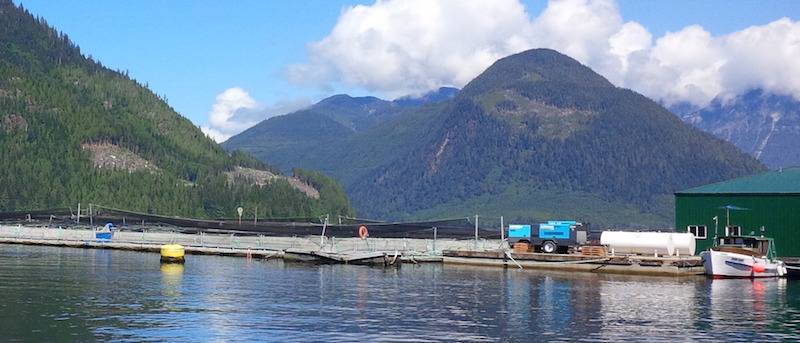
Environmental Risk Assessment Initiative
August 11, 2015
By Tom Walker
 Canadian program conducts risk assessments to wild salmon from aquaculture
Canadian program conducts risk assessments to wild salmon from aquacultureCaroline Mimeault from the Department of Fisheries and Oceans Canada (DFO) recently presented the details of the Aquaculture Science Environmental Risk Assessment Initiative at Aquaculture Canada 2015.
According to Mimeault, DFO invested $70 million (CAD) in the Sustainable Aquaculture Program (2008-2013) to enhance the sustainable development of the aquaculture industry. As a part of this effort, the Program for Aquaculture Regulatory Research (PARR) and an Aquaculture Science Environmental Risk Assessment Framework were created as well as a validated Pathways of Effects for Finfish and Shellfish Aquaculture.
The Sustainable Aquaculture Program was renewed (2013-2018) with a commitment of $54 million to improve the industry regulatory system. This improvement is to be met by streamlining regulations, improving regulatory management, increasing scientific knowledge and ensuring transparency. In part, in order to achieve this, DFO is conducting risk assessments under the Aquaculture Science Environmental Risk Assessment Initiative to determine the risk to Fraser River wild sockeye salmon from pathogen transfer from Atlantic salmon farms in the Discovery Islands area of British Columbia.
A number of pathogens will be looked at, the first one is Infectious Hematopoietic Necrosis Virus (IHNV). IHNV is known to occur in sockeye salmon and outbreaks have occurred in farmed Atlantic salmon in British Columbia.
Standard risk assessment methods will be utilized by DFO terminating in a peer-review of both the supporting documents and the risk assessment through the Canadian Science Advisory Secretariat (CSAS). The Secretariat coordinates and facilitates the review of regional scientific issues for DFO fostering national standards of excellence. The conclusion of the IHNV risk assessment will result in publically available working papers, conceptual model, likelihood and consequence assessments in addition to the risk assessment outcomes which include and conclusions, recommendations, knowledge gaps and uncertainties.
- New Center of Excellence targets RAS industry development
- Equity investment allows expansion of Northern Harvest Sea Farms





